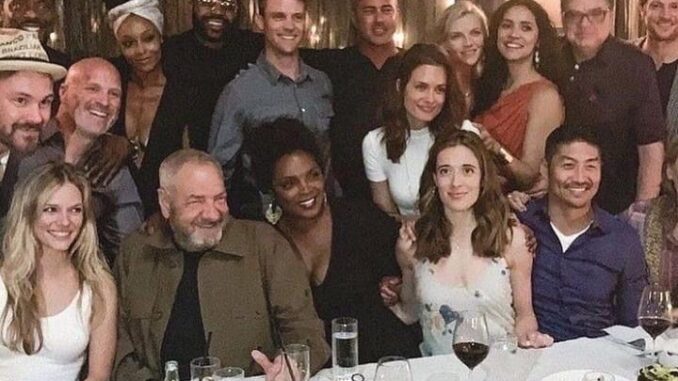
Nine Cameras, 25-Minute Shoot: How ‘Chicago Fire’ Made Its Bottle Episode Wednesday’s
Chicago Fire was a Bottle episode, but it wasn’t like anything the NBC mainstay had ever tried before. It also actually achieved the usual goal of a Bottle episode: saving some money on production costs.
For the hourlong “My Lucky Day,” director Reza Tabrizi deployed nine cameras, including six GoPros placed around the set, and writers Michael Gilvary, Andrea Newman and Derek Haas wrote each scene like a play. The actors — regulars David Eigenberg and Joe Minoso and guest stars Baize Buzan and Brian King — then shot scenes that lasted longer than 25 minutes in some cases.
Wednesday’s Chicago Fire was a Bottle episode, but it wasn’t like anything the NBC mainstay had ever tried before. It also actually achieved the usual goal of a Bottle episode: saving some money on production costs.

For the hourlong “My Lucky Day,” director Reza Tabrizi deployed nine cameras, including six GoPros placed around the set, and writers Michael Gilvary, Andrea Newman and Derek Haas wrote each act like a play. The actors—regulars David Eigenberg and Joe Minoso, along with guest stars Baize Buzan and Brian King—then shot scenes that lasted more than 25 minutes in some cases.
Haas broke down the filming of “My Lucky Day” with THR.
This looks no different than a regular episode—there aren’t any long, uninterrupted takes from these extended shots. How did you accomplish that?
In a typical Chicago Fire episode, in one act, we’ll have seven or eight different scenes. … The challenge of this episode was basically doing five acts inside a service elevator. Because we wanted the performances to be as raw and tight as possible, we had the actors learn the acts as if it were a play. We did act two and act three together, so we would have 25-minute takes, whereas normally it would be three or four minutes.
We had three cameras and six GoPros inside the set. And we would do multiple takes of the scene so we could get closer and things like that. But it was a different process than what we normally do.
What does that process typically look like, in terms of how many cameras you’re running?
We’ll usually have two. Rarely we’ll have three. Sometimes we’ll have more if we’re doing a big stunt. We rarely use GoPros and only when we’re doing a big stunt. Reza Tabrizi, who directed this episode, is our executive producer and has been on the show since the beginning. He started as a cameraman and is really good at knowing where to put the cameras and how to move them.
What was the longest shot?
It was about 28 minutes, which was crazy for us. David and Joe are both Chicago theater people, so that was part of why we were excited to write this particular episode and put these two characters in it. They are so good at acting on the small screen and on stage.
How did the idea of shooting this way come about? Was it your intention from the beginning when you wrote it?
It was pretty late in the process. We had a very unusual year where we started in September instead of July. We broke down the first eight episodes and started production, and then we realized that this season was really expensive because of COVID. We got some advice — is there anything we can do to make it more cost-effective? We don’t do a lot of bottle episodes, and in fact, our bottle episodes tend to cost more than other episodes because they tend to have so much action in whatever location we’re in, and we have huge sets, so they don’t save us money.
This became a challenge for the writers’ room — how can we do a new version of a bottle episode? We’ve never really done an episode that’s almost all in one place. So Michael Gilvary, one of our head writers, came up with the idea of doing a service elevator scene inside a self-storage facility, and we thought, OK, if we can get two other actors in, David Eigenberg and Joe Minoso — they’re very compelling as actors — and let’s write longer scenes. There was more dialogue than we normally do.
Were there more rehearsals than a normal episode?
That was unusual for us. We don’t normally rehearse before we shoot an episode. But they got these four actors together and rehearsed for a few days before production. It became a dance with the crew, “What’s the movement going to be like?
